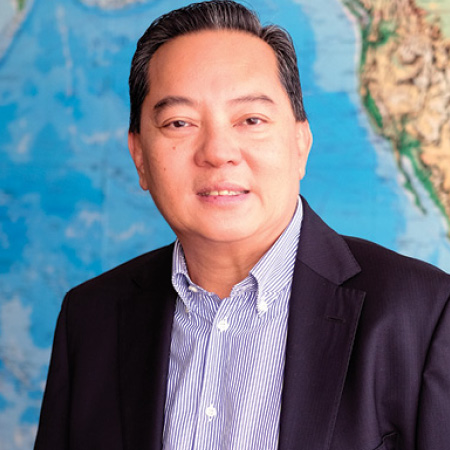The Port of Manila has long been the Philippines’ busiest terminal for maritime trade functions. The congestion has steadily been increasing over the years, yet the government has not expanded the road network. This has resulted in a bottleneck situation in Manila. For Asian Marine Transport Corporation (AMTC), the overcrowding is not an issue, simply because it discovered an alternative solution. In 2010, the shipping company recognised that Batangas Port—located one-and-a-half hours south of Manila—was being underutilised and decided to spearhead its development. CEO Paul Rodriguez explains that the port is close to where the food factories and new industrialised companies are based, so it was an obvious choice to be used for shipping purposes.
However, the majority of businesses were still travelling to the port of Manila to load their goods. “Batangas Port was built by the government 10 years ago but it was hardly being used,” Paul explains. “This was because the factories and big corporations based there did not like change—they were too used to shipping out of Manila. Unfortunately, the Port of Manila was expanded but not the roads, so we initiated and pioneered Batangas Port as a hub for distribution going out to the central and southern Philippines. We were quite bold in doing this and it has proven to be a great decision.
“Batangas Port has gone from a 3-per-cent utilisation rate to 97 per cent. It has really been a game changer in our industry. We had to do a lot of convincing to get all of the shippers and company owners to understand that they too have to contribute to alleviating the port congestion and road traffic in Manila, but I have to say we have been successful in doing just that,” Paul says.
When AMTC began utilising Batangas Port for its operations, it was evident that the government had been rather reticent to invest in its facilities. “They didn’t know whether we would be able to sustain what we were doing and we didn’t want to rely on their support,” Paul notes, “so we chose to substantially invest and bring in our own cargo-handling equipment and start our own port operation. We also bought our own container yard adjacent to the port so we could do it all on our own.” The pioneering efforts of the company paid off, as it is now serving the largest food manufacturers in the country and carries the biggest volume of vehicles and project cargoes on a nationwide scale.

